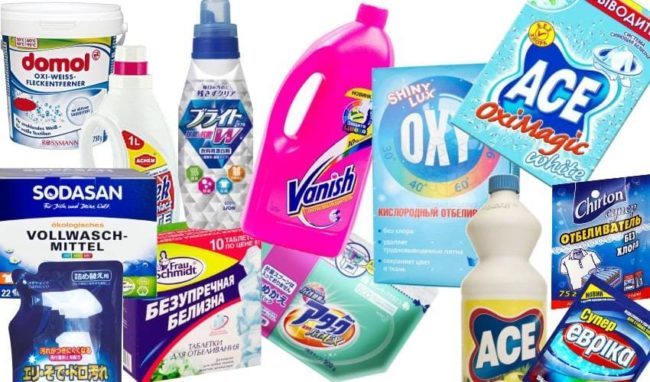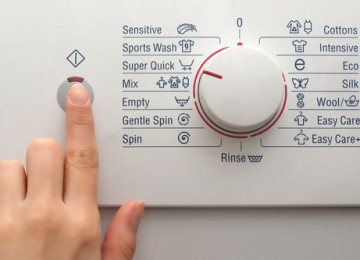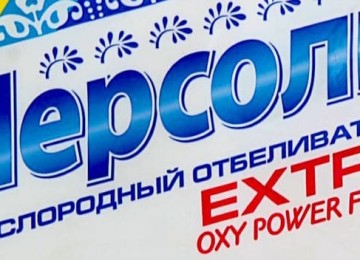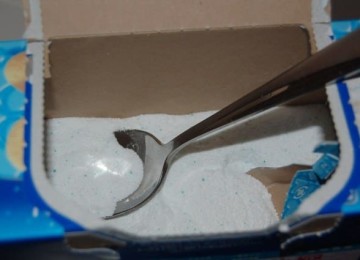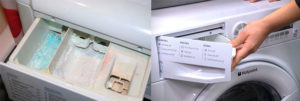 White things become gray or yellowish after a certain time. Our grandmothers know excellent recipes with which to return the snow-whiteness of linen, but they all require a lot of time and effort. And today, housewives are increasingly asking the question of how to bleach laundry using a washing machine, and what product is recommended to use for this. In addition, there is another pressing question - where to pour bleach in the washing machine.
White things become gray or yellowish after a certain time. Our grandmothers know excellent recipes with which to return the snow-whiteness of linen, but they all require a lot of time and effort. And today, housewives are increasingly asking the question of how to bleach laundry using a washing machine, and what product is recommended to use for this. In addition, there is another pressing question - where to pour bleach in the washing machine.
Types of fabric bleaches
Today you can purchase whitening products in the form of powders or liquids, which are divided by composition and effect.
Oxygen-containing products
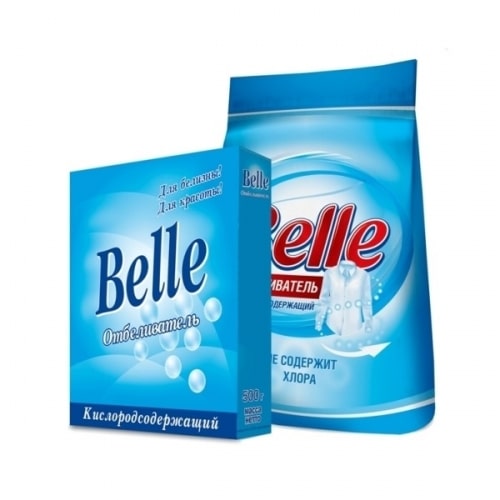
They are represented by solutions of hydrogen peroxide and contain certain components:
- stabilizers;
- active substances;
- optical brighteners;
- fragrance;
- regulators.
The main advantage of such bleaches is their use not only for linen and cotton, but also for wool, synthetics and even silk. Multi-colored fabrics will acquire brightness and freshness, dirt will be washed off completely, dyes will retain their properties.
Such bleaching agents can be poured, without fear of reaction of chemical compositions, with different washing powders. The compositions are hypoallergenic and do not cause harm to the body. In addition, such bleaches have a disinfecting effect.
Peroxide-based solutions are not durable and lose their beneficial qualities. For this reason, many advise using powder formulations.
Optical compositions
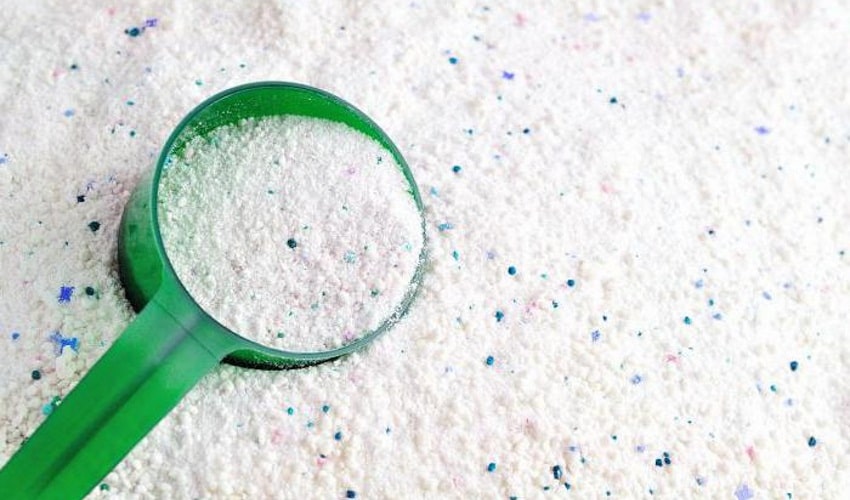
Another group of fabric bleaches that makes fabrics clean. But here it is necessary to note that the apparent white tint they give is created by the luminescent dyes contained in the composition.
This type of bleach is considered aggressive; the fabric begins to tear and turn yellow over time. It is not recommended to use it for items made of wool, silk, or synthetic materials.
Chlorine products
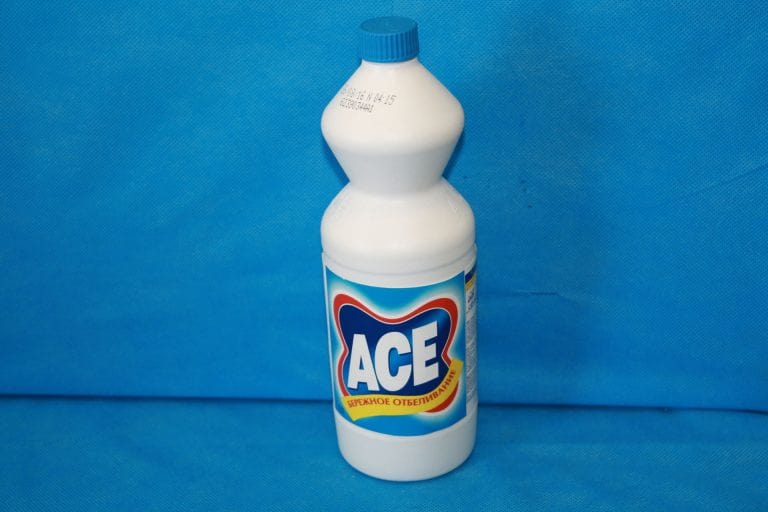
These drugs are sold in plastic containers that are resistant to chlorine. They easily return the original whiteness to cotton and linen items. When using this bleach, you must strictly follow the dosage specified by the manufacturer in the accompanying instructions. In order to avoid irritation of the respiratory system and the skin of the hands, before pouring the product, you should use a protective mask and rubber gloves.
How to Use Fabric Bleach in the Washing Machine

In most cases, it is necessary to restore freshness to women's blouses, shirts, underwear and socks. Simply put, those things that end up in the washing machine more often than others. It is easy to wash and bleach small items by hand, using the product according to the instructions.But curtains or bedding will have to be washed in the machine.
For adding bleach to the washing machine, certain models (Lg, Indesit, etc.) have special trays with a triangle on them. In most cases, such a part is removable and is placed in the compartment for washing powders used in pre-washing. As a rule, such a compartment is marked with the letter A or the number I. This option is best suited for optical or oxygen compounds that are not included in detergents.
Housewives warn that it is not always recommended to pour White into the washing machine. First of all, you should carefully study the operating requirements for your washing machine. If the manufacturer allows the use of chlorine preparations, this means that all the main components of the machine are made of chlorine-resistant materials.
Still, where should you pour the bleach? The chlorine composition must be added in such a way that a minimum number of parts of the washing machine come into contact with it. Pour the product according to the indicated dosage, dissolve it in two to three liters of liquid, which is poured directly into the drum, along with the loaded items.
Before the process begins, things must be sorted by white and colored shades and by type of material. Products with metal decorations, rivets, zippers or buttons are not subject to bleaching. The fact is that metal elements can darken, and the material around them will turn yellow.
If the instruction manual for your washing machine prohibits adding chlorine bleach, then the clothes are pre-soaked for a maximum of an hour in water with bleach added to it, and only then sent to the machine.
Using bleach to clean your washing machine
If the rules for using the unit are violated, an unpleasant odor appears, which is quite difficult to get rid of. This happens in cases where:
- dry dirty things are stored in the machine until the required volume is reached;
- at the end of the process, the drum and rubber seal are not wiped from water, the loading door remains closed;
- Washing powder or other product not intended for your device is used to whiten items.
Residues of soap products settling on the drum cause mold to form, which gives off unpleasant odors. They are the ones who warn washing mashine owners that they should disinfect them in order to destroy harmful microorganisms that have appeared inside. In such cases, it is not recommended to load things into a bad-smelling washing machine, as they will acquire exactly the same odors, which will penetrate into the clothes and will haunt you for a long time.
To eliminate unpleasant odors in the washing machine, you can use one of two well-known methods. Powder without bleach must be poured into the compartment, the operating mode must be activated at a high temperature (90 - 95 degrees), and laundry should not be placed in the drum. This cleaning method is recommended to be used once every six months. Upon completion of the process, the drum and rubber seal are wiped dry, and the hatch remains open.
Whiteness should be poured in the amount of one liter into the compartment intended for the main wash. The program is set to the maximum temperature regime. When the loading door warms up, the washing machine temporarily stops or turns off completely. With Whiteness inside, the device needs to stand for a couple of hours, after which the draining and rinsing process is activated, while table vinegar is added to the conditioner tray. Repeated rinsing is carried out without adding detergent compounds.
You can clean your washing machine with Amway oxygen cleaner. In an amount of 100 ml it should be poured into the drum, after which the machine is turned on and the temperature is set to sixty degrees.
How to whiten things using improvised means
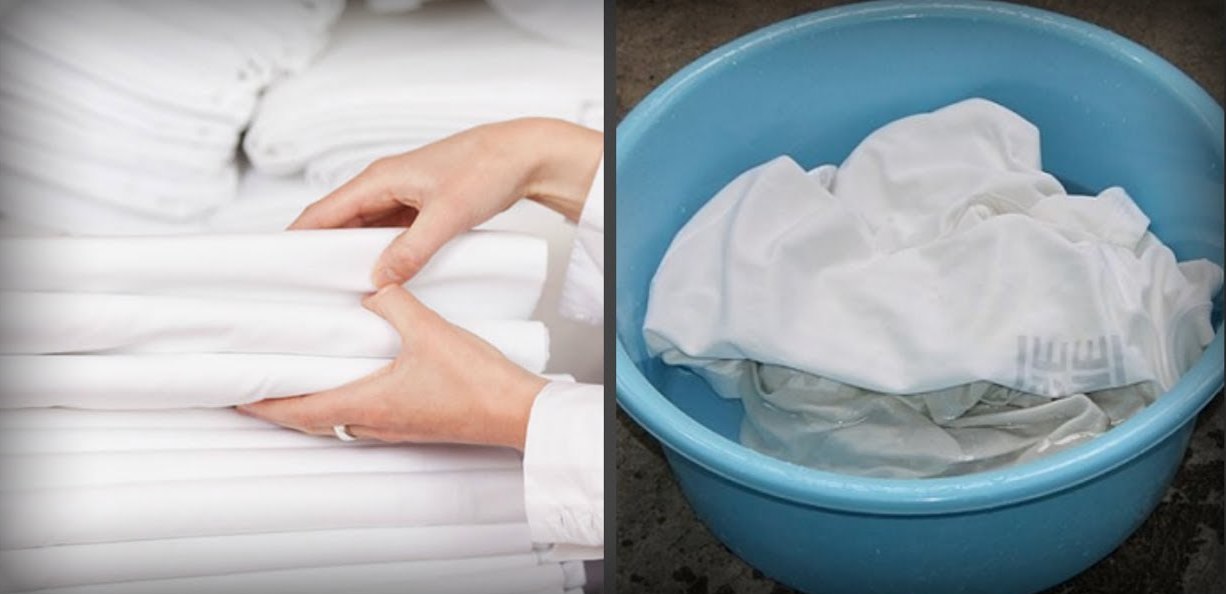
Do you need to wash with bleach, but don't have the right product on hand? We recommend using compounds that are available in any home. Here are some examples:
- boric acid. First you need to activate the soak function. It is necessary to pour acid into the drum, directly into the laundry, in the amount of two spoons, after which the machine starts. As soon as the washing of the items is completed, the longest cycle is activated and an additional rinse is performed;
- soda. It is considered a budget option for cleaning heating elements from deposits. You need to pour about one hundred grams of detergent into the washing powder tray and add the powder. The item will look like new at the end of the wash cycle. This inexpensive bleach can be used when washing children's clothes, because it is considered safe and does not cause allergies. You can buy special soda for washing, but it costs much more than regular baking soda;
- hydroperide tablets. We put two of them in the drum along with the clothes, pour in washing powder, and activate the SMA. To improve the quality of washing, perform a second rinse;
- aspirin. We put things in the drum of the machine, crush ten tablets into powder, and pour them inside. We perform washing on a mode suitable for the type of material;
- blue. It is believed that she does not bleach things, but tints them. The process is as follows - the blue is diluted with water in a ratio of 1 to 1, it must be poured into the bleach compartment in the washing machine. As a result, things turn out clean, with a slight bluish tint.
Conclusion
Items are not always bleached effectively. In order for the process to proceed efficiently, all recommendations must be followed exactly. In addition, it should be remembered that such procedures are prohibited for colored linen.
